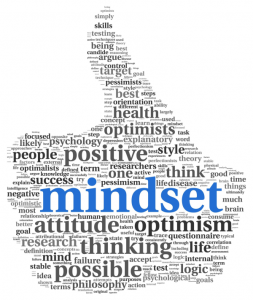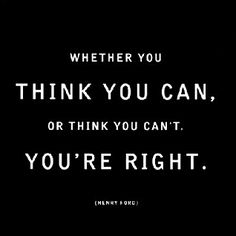Growth mindset…You hear this phrase everywhere, and it has certainly become a buzzword in the educational arena. Administrators use it as a way to enact change with teachers. Teachers use it as a means to enact change with students. But what is it, and how can a school truly incorporate a growth mindset into their own culture?
A person’s mindset is defined as his or her beliefs about themselves. According to Carol Dweck (2006), author of the book Mindset, a person holds either a fixed or a growth mindset. Those with a fixed mindset believe that they will never change or grow. Their abilities, skills, and talents will remain the same. In contrast, those with a growth mindset believe they can improve themselves through dedication and hard work. “Growth mindset is based on the belief that your basic qualities are things you can cultivate through your efforts” (Dweck, p. 7).
In 2015, Dweck authored an article in Education Week titled Growth Mindset, Revisited. She was concerned that growth mindset would be described only in terms of effort. She states, “A growth mindset isn’t just about effort” (Dweck, 2015, p. 24). Students will reach their goals through a variety of ways including trying new strategies and asking others for help (Dweck, 2015, p. 24).
Putting a growth mindset into practice; however, can be challenging in a school setting. It all begins with professional development and working with those who have the greatest impact on the students – the teachers. It takes not only acceptance by the teachers, but a willingness to change themselves. It is important to emphasize that this is a process. Belief systems do not transform themselves overnight. It takes time and support. In her book, Carol Dweck discusses the plasticity of the brain and the fact that our brain changes over time as we learn new things (Dweck, 2006). This applies to adults as well as students. In other words, it takes a growth mindset to implement a growth mindset!
At one Florida school, teachers began their professional journey with a year-long book study of Mindset. Initially, the teachers were hesitant. Not only was the concept foreign to many, but they had gotten used to professional development sessions where they were the consumers of information instead of the producers. This book study changed all of that. Teams of teachers worked collaboratively to present information to their colleagues using an interactive, technology based approach. The results were fantastic. Not only did the presenters become experts, but so, too, did the audience members. As the year went on, the presentations became more in-depth. A natural competition occurred and the final presentation included a video parody on a church setting with song, costumes, and props.
And what effect did all of this have on the classroom? As time went on and teachers became more familiar with the idea of growth mindset, they worked diligently to authentically incorporate it into their classroom environments, and the evidence was seen in visits to their classrooms. They were even overheard using the mindset verbiage in conversations with each other.
As they say, “The proof is in the pudding.” In this case, proof of a growth mindset was in the way these innovative teachers took a risk and became the learners themselves. Once this happened, transferring this mindset to the students was the easy part.
Dweck, C. (2015, September 23). Growth Mindset, Revisited. Education Week, pp. 24, 20.
Dweck, C. S. (2006). Mindset: The new psychology of success. New York: Ballantine Books.

